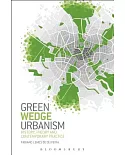This volume explores the conceptual “topography” of landscape: It examines the character of landscape as itself a mode of place as well as the modes of place that appear in relation to
landscape.
Leading scholars from a range of disciplines explore the concept of landscape, including its supposed relation to the spectatorial, its character as time-space, its relation to indigenous
notions of “country,” and its liminality. They examine landscape as it appears within a variety of contexts, from geography through photography and garden history to theology; and more specific
studies look at the forms of landscape in medieval landscape painting, film and television, and in relation to national identity.
The essays demonstrate that the study of landscape cannot be restricted to any one genre, cannot be taken as the exclusive province of any one discipline, and cannot be exhausted by any single
form of analysis. What the place of landscape now evokes is itself a wide-ranging terrain encompassing issues concerning the nature of place, of human being in place, and of the structures that
shape such being and are shaped by it.





















